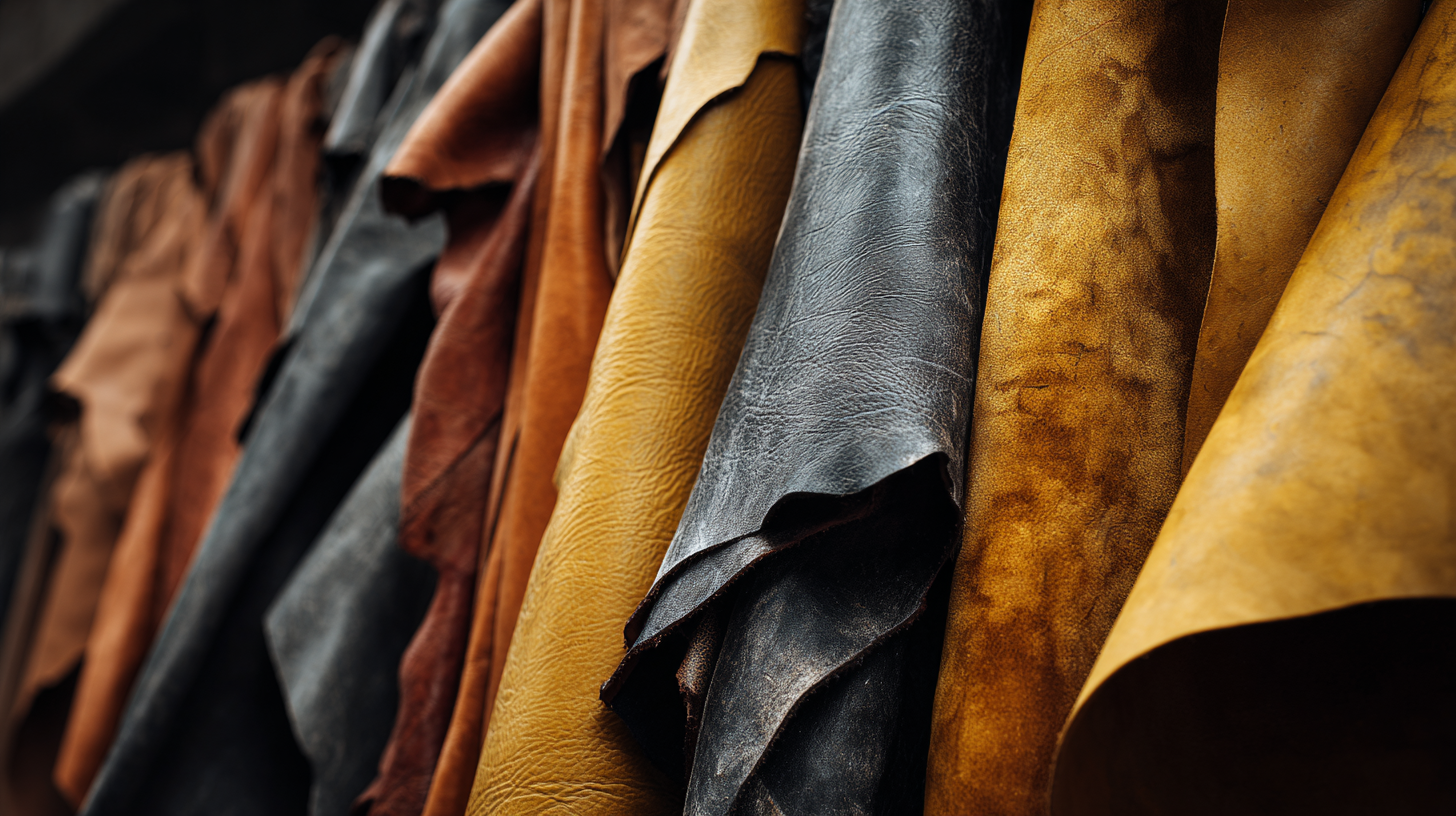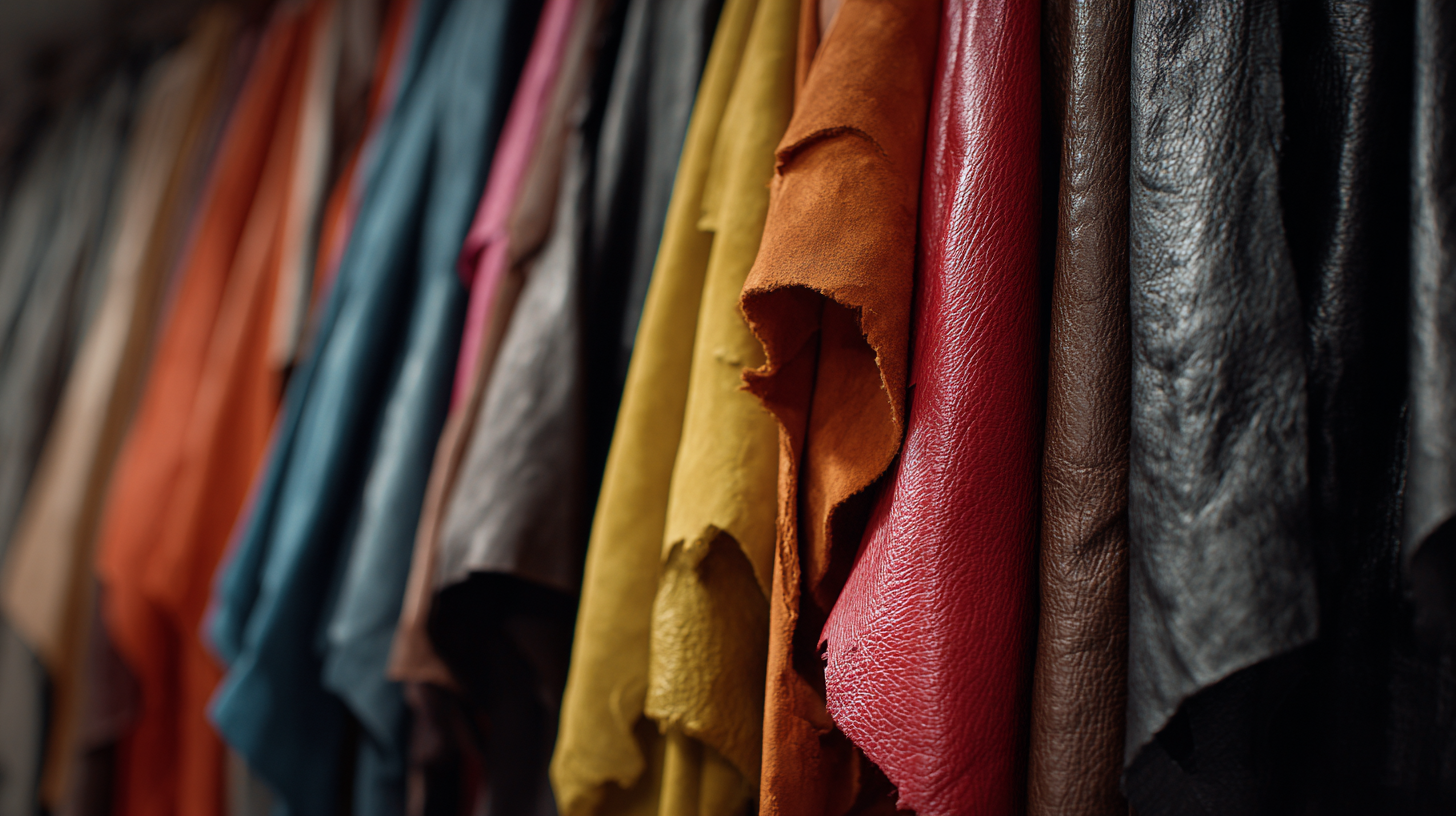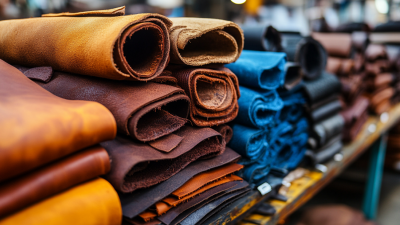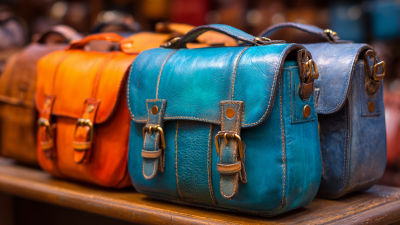The Evolution of Leather Manufacturers in Sustainable Fashion Trends
The fashion industry has witnessed a significant shift towards sustainable practices, and leather manufacturers are increasingly playing a crucial role in this transformation. According to the Global Fashion Agenda, the fashion industry accounts for 10% of global carbon emissions, prompting a demand for more environmentally-friendly materials and processes. A recent report by the Leather Working Group noted that over 60% of leather manufacturers are now implementing measures to reduce their environmental impact, empowering them to meet the evolving expectations of conscious consumers. As market research from McKinsey highlights, the global leather market is projected to reach $400 billion by 2025, with a growing share dedicated to sustainable sourcing and production. This evolution not only reflects changing consumer values but also presents leather manufacturers with unprecedented opportunities to innovate and lead in the realm of sustainable fashion.

The Historical Context of Leather Manufacturing in Fashion
 The historical context of leather manufacturing in fashion reveals a journey deeply intertwined with human civilization. Dating back thousands of years, ancient cultures utilized animal hides for clothing, shelter, and tools, laying the groundwork for contemporary leather craftsmanship. The Industrial Revolution marked a significant turning point, enabling mass production and leading to the establishment of leather as a staple in luxury fashion. According to the Fashion Institute of Technology, leather has remained a dominant material in the fashion industry, with 32% of luxury goods relying on leather products as of 2021.
The historical context of leather manufacturing in fashion reveals a journey deeply intertwined with human civilization. Dating back thousands of years, ancient cultures utilized animal hides for clothing, shelter, and tools, laying the groundwork for contemporary leather craftsmanship. The Industrial Revolution marked a significant turning point, enabling mass production and leading to the establishment of leather as a staple in luxury fashion. According to the Fashion Institute of Technology, leather has remained a dominant material in the fashion industry, with 32% of luxury goods relying on leather products as of 2021.
As sustainability becomes a pressing concern in modern fashion, the leather industry faces scrutiny over its environmental impact. Innovative techniques like vegetable tanning and sourcing from ethical farms are being adopted by leading manufacturers. Reports indicate that 58% of consumers prefer brands that commit to sustainable practices. This shift not only transforms the production process but also caters to a growing market demand for eco-friendly options.
Tips: When shopping for leather products, consider brands that transparently share their sourcing and production practices. Look for certifications that guarantee sustainability, such as the Leather Working Group certification. Engaging with brands committed to ethical production contributes to a more responsible fashion ecosystem.
Shifts in Consumer Preferences Toward Sustainable Materials
The landscape of leather manufacturing has shifted significantly in recent years, driven primarily by changing consumer preferences toward sustainable materials. According to a report by McKinsey & Company, the sustainable fashion market is projected to grow from $6.3 billion in 2019 to $8.25 billion by 2025, reflecting a strong consumer demand for eco-friendly products. As shoppers become increasingly informed about the environmental impact of their purchases, leather manufacturers are compelled to adopt more sustainable practices.
Moreover, a survey conducted by Nielsen found that 73% of global consumers are willing to change their consumption habits to reduce their environmental impact. This growing consciousness has led leather brands to explore innovative alternatives, such as bio-based leathers made from natural waste materials, which not only reduce pollution but also contribute to a circular economy. As traditional leather production is often associated with chemical pollution and high water usage, manufacturers are now investing in sustainable tanning processes and animal welfare initiatives to appeal to the eco-conscious consumer. The shift towards sustainability in leather fashion is not just a trend; it represents a fundamental change in the industry’s approach to production and consumer engagement.
The Evolution of Leather Manufacturers in Sustainable Fashion Trends - Shifts in Consumer Preferences Toward Sustainable Materials
| Year | Type of Leather | Sustainable Practices Implemented | Consumer Demand (%) | Market Growth Rate (%) |
|---|---|---|---|---|
| 2018 | Conventional Leather | None | 30% | 3% |
| 2019 | Eco-friendly Leather | Water-based tanning | 40% | 5% |
| 2020 | Recycled Leather | Use of post-consumer waste | 55% | 8% |
| 2021 | Plant-based Leather | Use of sustainable crops | 65% | 12% |
| 2022 | Lab-grown Leather | Biotechnological methods | 75% | 15% |
Innovative Practices in Eco-Friendly Leather Production
The leather industry is undergoing significant transformation as manufacturers pivot towards sustainable practices in response to growing environmental concerns. Innovative techniques in eco-friendly leather production have emerged, leveraging alternative materials and reducing carbon footprints. For instance, mycelium leather, derived from fungi, has gained popularity for its minimal resource consumption and biodegradability. Brands are increasingly embracing these materials to cater to environmentally conscious consumers while maintaining the aesthetic and durability expected from traditional leather.
Beyond alternative materials, advancements in tanning processes are also revolutionizing eco-friendly leather production. Traditional tanning methods often rely on harmful chemicals, but new technologies utilize plant-based processes and water-efficient techniques. These innovations not only lower the environmental impact but also enhance the overall quality of the leather. As the sustainable fashion movement gains momentum, leather manufacturers are recognizing that adopting such innovative practices not only meets consumer demands but also fosters a more sustainable future for the industry.
The Role of Technology in Sustainable Leather Alternatives
The advancements in technology have significantly impacted the sustainable leather sector, allowing manufacturers to create alternatives that are both eco-friendly and appealing to consumers. According to a report by Grand View Research, the global vegan leather market size was valued at approximately $25.7 billion in 2021, with projections estimating it will grow at a compound annual growth rate (CAGR) of 49% from 2022 to 2030. This rapid expansion indicates a shift in consumer preferences towards more sustainable options, pushing brands to innovate in their material sourcing and production processes.
Innovative technologies, such as bio-fabrication and the use of mushroom mycelium, are setting new standards in environmentally conscious fashion. Companies like Bolt Threads and MycoWorks are leading the way by harnessing nature's materials to create leather-like products that greatly reduce water usage and carbon footprints. In addition, digital design tools enable brands to simulate materials, reducing waste traditionally associated with prototyping.
Tip:
When searching for sustainable leather products, look for certifications and transparency in the manufacturing process. Brands that disclose their methods and the sustainability of their materials are more likely to be genuinely committed to reducing their environmental impact. This can help consumers make informed choices that align with their values.
Future Trends: The Intersection of Leather and Circular Fashion Practices
The intersection of leather manufacturing and circular fashion practices is gaining unprecedented attention as the fashion industry shifts towards sustainability. The adoption of alternative leather options, such as those derived from agricultural byproducts like grapes and apples, aligns with the increasing consumer demand for eco-friendly products. A report by the Sustainable Apparel Coalition indicates that the fashion industry's environmental footprint could be reduced by up to 75% through the implementation of circular practices. This includes adopting innovative materials and optimizing production processes to minimize waste.
Moreover, the circular economy in fashion emphasizes the importance of reusing and recycling existing materials. For instance, predictions show that the fashion rental and resale market is projected to grow to $5.91 billion in India alone, showcasing a strong appetite for sustainable consumption practices. As technology continues to enhance the production of biodegradable and sustainable textiles, brands are encouraged to rethink traditional leather supply chains. By integrating circular practices, manufacturers not only meet consumer expectations but also contribute to a more sustainable future within the fashion industry.

Related Posts
-

China Leather Goods Thrive Amidst US China Tariff Challenges
-

5 Compelling Reasons to Choose the Best Quality Leather Purses for Your Business
-

Ultimate Guide to Choosing the Best Custom Leather Products for Your Needs
-

Unleashing Potential: Innovative Techniques for Boosting Leather Accessories Sales
-

Ultimate Guide to Designing Custom Leather Products for Your Brand
-

What Are the Essential Characteristics of High-Quality Leather Products?

